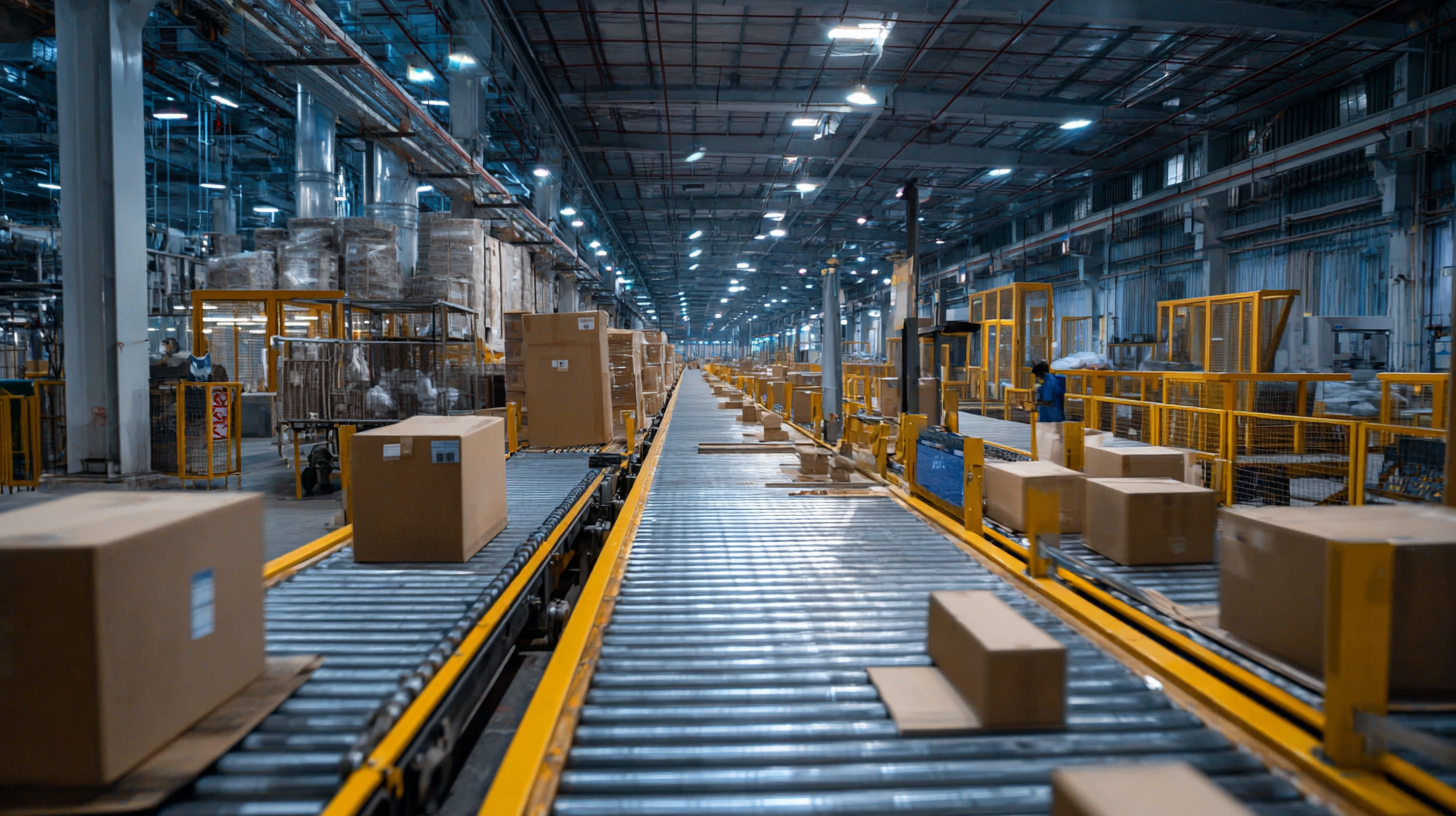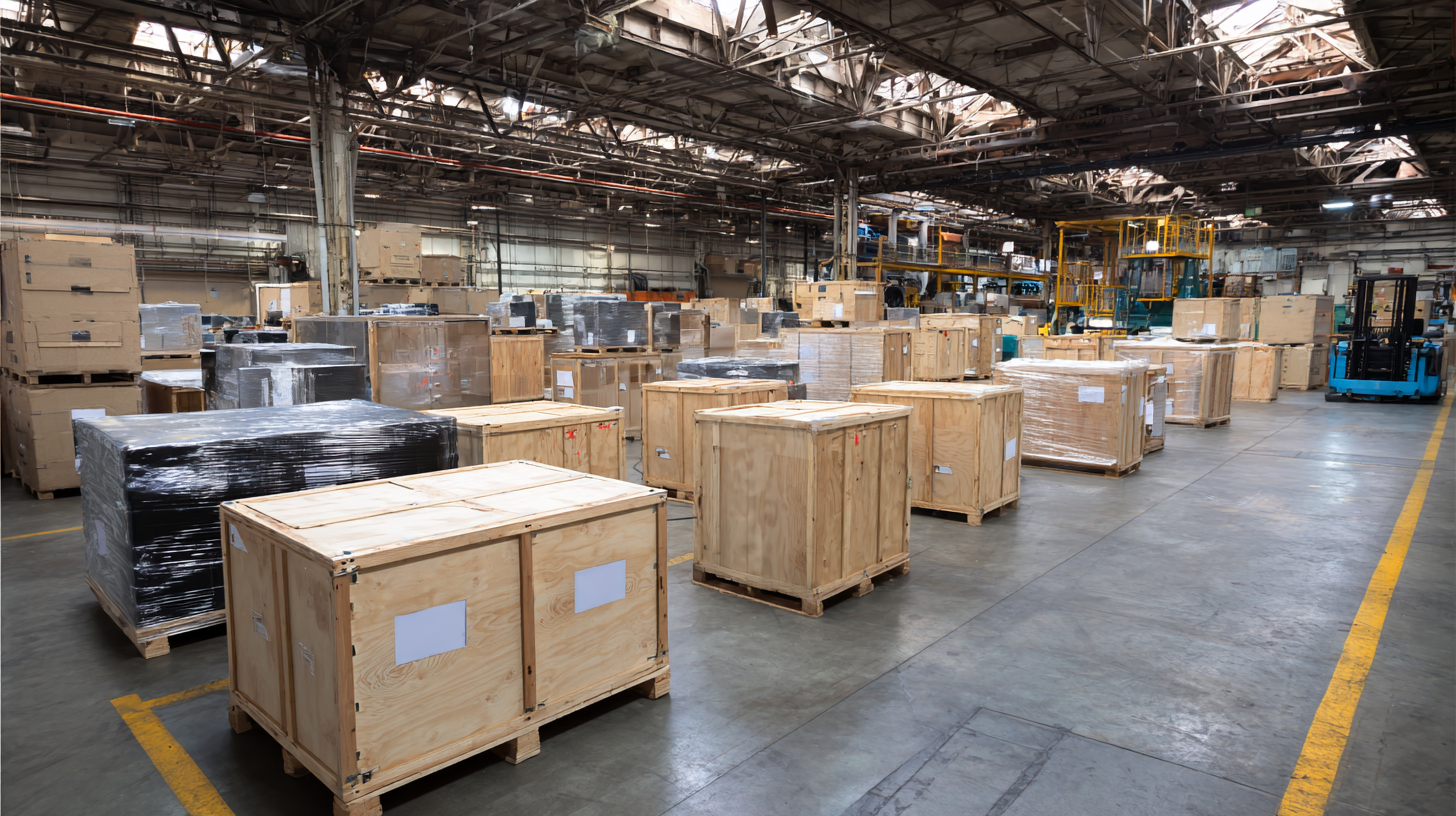ProMach is your partner from start to finish. Our product brands are grouped into distinct business lines that make the most sense to our customers, covering every function of the production line: Filling, Bottling & Capping, Decorative Labeling, Flexibles & Trays, Pharma, Handling & Sterilizing, Labeling & Coding, Robotics & End of Line, and Systems & Integration.
learn moreUnderstanding Industry Standards for Best Packing Equipment and How to Choose the Right Solution
In today's fast-paced industrial environment, the significance of choosing the right packing equipment cannot be overstated. According to a report by Smithers Pira, the global packaging market is projected to reach $1 trillion by 2024, reflecting an increasing demand for efficient packaging solutions across various industries. The right packing equipment not only enhances productivity but also reduces material waste and minimizes operational costs. With the multitude of options available, businesses must navigate through diverse technologies and standards to identify the most suitable solutions for their specific needs. This blog will explore critical industry standards pertaining to packing equipment and offer a comprehensive checklist to guide decision-makers in selecting the best solutions tailored to their operational requirements.

Understanding the Importance of Industry Standards in Packing Equipment Selection
When it comes to selecting packing equipment, understanding industry standards is crucial for ensuring efficiency and compliance. According to a recent report from the Packaging Machinery Manufacturers Institute (PMMI), approximately 32% of companies experienced increased productivity by aligning their equipment with established standards. These standards not only dictate the performance metrics of packing machinery but also address safety, environmental regulations, and compatibility with existing systems.

Furthermore, adherence to industry standards helps in optimizing operational costs. A study published by MarketsandMarkets highlighted that companies investing in compliant equipment could reduce operational downtime by up to 25%, significantly impacting the bottom line. By choosing packing solutions that conform to recognized standards such as ISO or ANSI, businesses can improve their supply chain robustness and maintain quality assurance throughout their processes. Investing time in understanding these standards ultimately empowers companies to make informed, strategic equipment choices that facilitate growth and sustainability in a competitive marketplace.
Key Types of Packing Equipment: Benefits and Applications in Various Industries
When it comes to packing equipment, understanding the key types available and their specific benefits can dramatically enhance operational efficiency across various industries. One of the most common types is the packaging machine, which automates the process of sealing products, improving speed and consistency. Industries such as food and beverage greatly benefit from these machines, as they ensure hygiene and meet regulatory standards while enabling faster production cycles.
Another significant type of packing equipment is the strapping machine, which is essential for securing packages during shipping and storage. This equipment is particularly beneficial in industries like logistics and manufacturing, where the safe transport of goods is critical. Strapping provides stability and strength, reducing the risk of damage during transportation. Additionally, vacuum packaging machines are gaining popularity in sectors that require extended shelf life for products, such as in the pharmaceutical and food industries. These machines remove air from the packaging, preventing spoilage and ensuring product integrity.
Choosing the right packing equipment involves not only understanding these types and their applications but also evaluating factors such as space constraints, product types, and volume needs. By aligning the right equipment with operational requirements, businesses can enhance productivity and ensure their products are packaged efficiently and safely.
Evaluating Packing Equipment: Key Metrics and Standards to Consider
When evaluating packing equipment, it's essential to consider several key metrics and industry standards that ensure optimal performance and reliability. First and foremost, look at the equipment's throughput capacity, which indicates how many packages can be processed per hour. This metric helps determine if the equipment meets production demands without bottlenecks. Additionally, consider the equipment's adaptability to different product types and sizes, as versatility can significantly enhance operational efficiency.
Another crucial factor is the equipment's compliance with industry standards, such as ISO or ANSI certifications, which guarantee that the machinery adheres to the best practices in safety and quality. Assessing the energy efficiency of the packing solution is also vital, as energy-efficient machines can reduce operational costs over time. Furthermore, maintenance requirements should be considered; equipment that requires minimal maintenance can save time and reduce downtime in production. By focusing on these key metrics, businesses can choose the right packing equipment that not only meets their operational needs but also aligns with industry standards.
Understanding Industry Standards for Best Packing Equipment and How to Choose the Right Solution
| Packing Equipment Type | Key Metrics | Performance Standards | Efficiency Rating | Maintenance Frequency |
|---|---|---|---|---|
| Automatic Packing Machine | Speed (packages/min), Flexibility (pack sizes) | ISO 9001, CE Mark | 95% | Monthly |
| Shrink Wrapping Machine | Temperature Control, Energy Consumption (kWh) | UL Listed, ASTM D6400 | 90% | Quarterly |
| Carton Sealing Machine | Seal Strength (lbs), Speed (cases/min) | ASTM D1974, ISO 11607 | 92% | Bi-Annual |
| Filling Machine | Accuracy (%), Output (bottles/hour) | FDA Compliance, GMP | 96% | Weekly |
| Labeling Machine | Label Accuracy (%), Speed (labels/min) | ISO 9001, FDA Approved | 93% | Monthly |
Best Practices for Choosing the Right Packing Equipment for Your Business Needs
When selecting packing equipment for your business, it's vital to align your choice with industry standards and best practices. According to the 2022 Packaging Machinery Market Report, the global packing equipment market is expected to reach USD 50 billion by 2025, emphasizing the need for businesses to keep pace with technological advancements.
 Choosing the right packing equipment involves assessing your specific product types, production volume, and the materials you will be using. For instance, companies dealing with fragile goods may prioritize equipment that offers cushioned support and precise handling to mitigate damage during the packing process.
Choosing the right packing equipment involves assessing your specific product types, production volume, and the materials you will be using. For instance, companies dealing with fragile goods may prioritize equipment that offers cushioned support and precise handling to mitigate damage during the packing process.
Additionally, it’s essential to consider the scalability and flexibility of packing equipment. A report from the Association for Packaging and Processing Technologies indicates that 60% of manufacturers investing in new equipment seek solutions that can adapt to changing production demands. Equipment that provides modular options or can easily integrate with automation systems will not only enhance efficiency but also future-proof your operations. Ultimately, making an informed decision based on industry insights and your unique needs will ensure that your packing processes remain efficient, compliant, and cost-effective.
Future Trends in Packing Equipment: Innovations Driving Industry Standards Forward
The packing equipment industry is undergoing a significant transformation driven by innovations that set new industry standards. With the smart packaging market estimated at $23.41 million in 2023 and projected to grow at a CAGR of 5.88% from 2024 to 2031, it is evident that technology is playing a pivotal role in shaping future packing solutions. New advancements in packaging materials and processes not only improve efficiency but also enhance the sustainability of packaging practices, addressing environmental concerns that are more prominent than ever.
Moreover, the food packaging technology market is expected to expand from $39.97 billion in 2023 to $60.7 billion by 2032, with a CAGR of 4.75% during the forecast period. As companies adapt to consumer demands for higher quality and environmentally friendly products, the integration of digital solutions in packing processes becomes vital. The future of packing equipment will likely include smart technologies that provide real-time data, optimize supply chains, and reduce material waste, ultimately leading to more resilient and flexible packaging strategies that can meet the evolving needs of various industries.